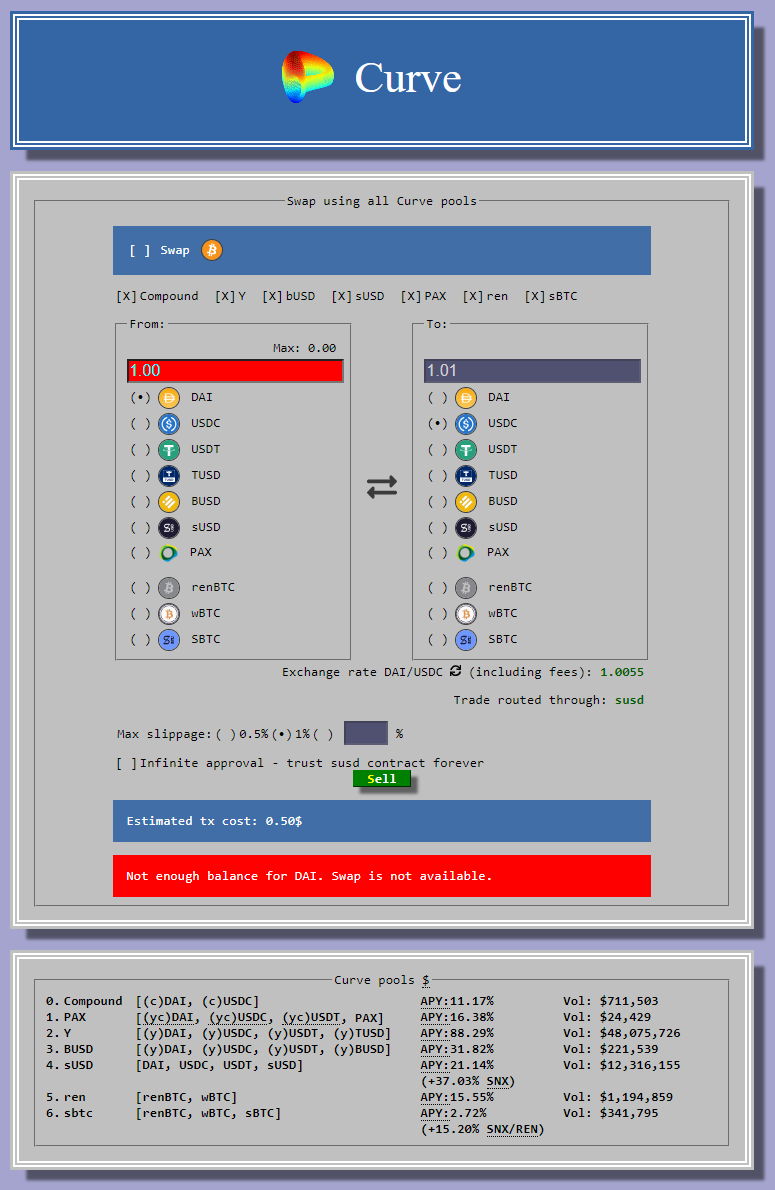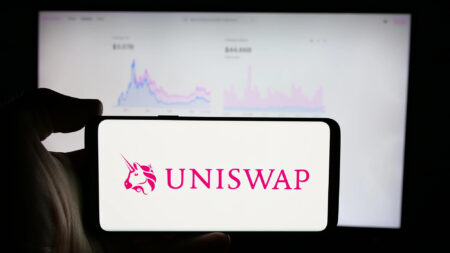 (Overview of the token swap interface of Curve.fi)
(Overview of the token swap interface of Curve.fi)
Of course, I have other risks to monitor when I enter into yield farming. E.g., if one of the stablecoins moves away from the peg and does not come back. Or the Curve.fi smart contracts have a flaw in their code (that should be covered when there is a professional audit of the code done), and last but not least, you need to follow the projects iEarn, Compound, and Synthetix, which directly interact with Curve.fi.
So, how or who is determining the interest rates for the different tokens or protocols? There is no secret sauce: it is just the good old supply and demand of the different tokens. Curve.fi constructed liquidity pools for the different tokens and protocols. The interest rate in those liquidity pools is driven by supply and demand. If there is great demand for one token on a specific protocol, then the interest rate goes up to incentivise LPs to provide sufficient liquidity into that pool, which will drive interest rates back down to levels that are more normal. Since each borrowing/lending platform has a different ecosystem (and or user base), the supply and demand can vary between the platforms or the market will start to price in some kind of credit risk, which can also create an interest rate spread between them. However, there is a catch. If you think you can just hop around and always place your investment at the highest yielding token, you most probably will not maximise your profits. Gas and fees play an important role in your investment decision.
All of you who regularly read my newsletter will know that I am rather sceptical when it comes to the DeFi space. The further down I go into the rabbit hole, the more I realise that I must be more specific about my scepticism. The crypto and blockchain finance space is starting to show some features with real added value that are great for retail clients. Those clients who were dropped like hot potatoes by traditional commercial banks. You can invest your assets with low fees and earn on your investments what is due to you, and determine your own amount of risk without having several intermediaries and intransparent fees and charges. The more solid projects entering the space (or have been in the space and earned the trust of the community), the bigger those borrowing/lending pools will become. They will offer a real alternative to leverage the tokens you have in your portfolio.
However, when I look past the retail clients, my view on the DeFi space is still one of scepticism. Asset managers could try to place large asset amounts on DeFi, but the current systems and platforms are not ready for this yet. Maybe in the distant future NEO banks will collaborate. They could implement Curve.fi in their open banking system, and their clients would be able to place their stored tokens in the DeFi space (for a small fee, of course).
For further information about Curve.fi and Compound, please see the links below:
Market Commentary





